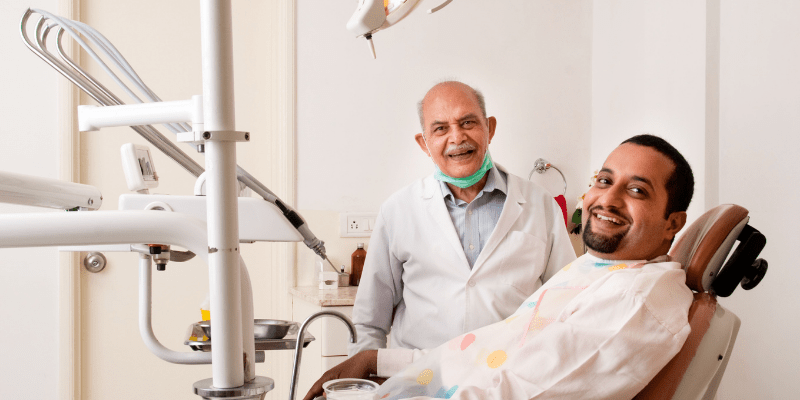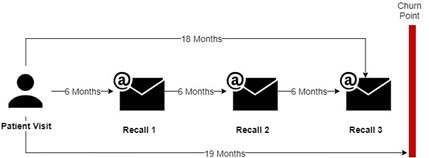In today’s consumer-centric world, almost every business focuses on catering to its consumers’ needs, expectations, and preferences. The same applies to the dental world. The most crucial asset of a dental practice is its patient base. Happy patients keep coming back, telling their family and friends about you and becoming ambassadors of your practice. The reverse is also true; unhappy patients do not return but go on to tell others about their perceived lousy experience at your practice.
Patient Experience is no longer a buzzword. The average patient has little understanding of their dental service provider’s clinical excellence or lack thereof. Instead, their opinions are typically based on the overall experience from the time they decided to see a dentist to post-treatment. Almost every dental practice does its absolute best to provide quality experiences to patients. However, the million-dollar question is how patients receive and perceive it.
Enter Patient Feedback. When I started working in the dental industry almost two decades ago, the patient feedback loop was a rather lengthy one, often extending to six months. The patient would leave the practice post-treatment and hear nothing until the six-monthly recall letters or postcards arrived in the mail. If the patient returned for a checkup, the assumption was that they were satisfied with their previous visit. This method of measuring patient satisfaction was inconsistent and prone to error. Neither did a returning patient necessarily mean their previous experience was satisfactory, nor did a non-returning patient indicate an unsatisfactory prior visit.
Then came the era of Google Reviews. Although the feedback loop became much shorter with Google Reviews, it came with its own downsides when determining patient satisfaction levels. If a patient left a Google Review on their own accord, it meant one of two things; either they were delighted with the experience or disappointed. While positive reviews were a good morale booster, negative reviews had far more significant, often devastating, impacts on the business. In most cases, by the time the negative review was in the public domain, it was too late to rectify any issues the patient may have experienced during their visit.
Although Google Reviews is still the go-to option for screening a new business, patient feedback loops today have become much shorter and more consistent thanks to feedback scoring systems such as Net Promoter Score (NPS), whereby a single question “On a scale of 1 to 10 how likely are you to recommend our practice to family and friends?” can provide a reliable and quantitative indication of the patient’s satisfaction and loyalty. A follow-up question such as “What was the reason for your score?” could provide valuable qualitative feedback to dental practices.
Regardless of size, location or patient base, every practice can benefit from a sound feedback system and shorter feedback loops. Some of these benefits include:
Continuous Improvement – Patient feedback can help practices identify areas of improvement across the business, whether it is about streamlining online booking systems, enhancing communications or even the general look and feel of the Waiting Room.
Patient Satisfaction – As consumers, most of our frustrations stem from not being heard. Providing a platform to voice their thoughts and concerns is often perceived as satisfactory by patients regardless of the subsequent actions that the practice takes based on the feedback.
Identify Issues Early – By actively seeking and encouraging patient feedback, dental practices can quickly identify and address any issues or concerns before they escalate. Timely resolution of problems can prevent negative online reviews.
Tailored Patient Care– By gaining insights into individual patients’ needs and preferences, the practice team can provide patients with a more streamlined and patient-centric experience, enhancing ongoing patient satisfaction.
Enhanced Reputation – Positive patient feedback serves as testimonials that can be used in marketing materials and websites if they are within the Australian Health Practitioner Regulation Agency (AHPRA) guidelines. Such testimonials can significantly enhance the practice’s online reputation and attract new patients.
Next time you hear the words Patient Feedback or Net Promoter Score, remember these concepts are no longer reserved for the top end of town. Any dental practice can enhance its patient experience by shortening the feedback loop. A satisfied patient base means guaranteed growth for your practice.
About the Author
Sean has 18 years of experience in the Australian Dental Information System industry and currently works as Head of Product and Innovation at Centaur Software. Sean holds a Bachelor of Applied Science from RMIT University and a Master of Business Administration from Swinburne University.
Sean is a passionate data analyst who loves everything data. Sean spends most of his time doting on his little daughter Amelia outside work.








